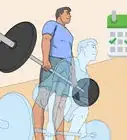This article was co-authored by Laura Flinn. Laura Flinn is a National Academy of Sports Medicine (NASM) Certified Personal Trainer, USA Olympic Weightlifting Sports Performance Coach and Certified Fitness Nutritionist, with an additional qualification as a TRX Suspension Trainer. Laura runs her own personal training program based in the San Francisco Bay Area and specializes in topics such as weight loss, muscle growth, cardiovascular training, and strength training.
There are 21 references cited in this article, which can be found at the bottom of the page.
wikiHow marks an article as reader-approved once it receives enough positive feedback. This article received 37 testimonials and 87% of readers who voted found it helpful, earning it our reader-approved status.
This article has been viewed 3,995,291 times.
A little extra padding around your midsection is normal, but it’s understandable to want to firm up for a leaner look. While it’s impossible to lose all of your belly fat in 2 weeks, you can lose some of it quickly by losing weight and body fat all over. All you have to do is eat the right foods (cutting calories in the process), amp up your exercise routine, and make a few lifestyle changes for the next 2 weeks. Continue your efforts to lose even more belly fat over a longer period of time!
Steps
Eating to Combat Belly Fat
-
1Load up on various colors of vegetables. Vegetables are relatively low in calories and contain lots of vitamins, antioxidants, and fiber to keep you healthy and satisfied. Eat around 2 to 3 cups of vegetables per day to cut back on calories for the next 2 weeks. Go to https://www.choosemyplate.gov/vegetables to see the 1 cup value of different types of cooked and raw vegetables.[1] Try to eat the entire rainbow each day!
- Start your meals with vegetables and greens before moving onto more calorically dense foods like proteins and carbohydrates.
-
2Eat more lean protein at each meal to build muscle faster. Protein helps build lean muscle mass, which means you’ll be burning more calories throughout the day—even while sitting! Allocate 15% to 20% of your daily caloric intake to lean proteins (go for a higher percentage if you’re physically active most days of the week).[2]Advertisement
-
3Make sure to get enough calcium and vitamin D. Dairy products are known for their calcium and vitamin D, which have been linked to more weight loss in a shorter period of time. Women under 50 and men under 70 need 1,000 mg of calcium and 600 IU of Vitamin D every day. Women 50 and up and men 70 and up should aim to get 1,200 mg of calcium and 800 IU of Vitamin D daily.[3]
- Protein-rich Greek yogurt, cow’s or nut milks, and low-fat cheeses can make you feel full and reduce calcitriol, a hormone that tells your body to store more fat.
- Choose unsweetened or minimally sweetened yogurt over sweeter (flavored) versions. If plain yogurt is just too plain for you, add some fresh blueberries or raspberries.
- Fresh mozzarella, feta, goat’s cheese, and cottage cheese are all great choices.
- Non-dairy products like green vegetables (like collards, kale, broccoli rabe, soybeans), orange juice, english muffins, soymilk, and cereals also add to your daily intake of calcium and vitamin D.
-
4Replace processed grains with fiber-rich whole grains. Processed grains (like white bread, white flour pastas, and white rice) are less nutritious than whole grains, which fill you up and lower the risk of heart disease, obesity, certain cancers, and diabetes. Whole grains also have lots of fiber, which can reduce bloating over the course of 2 weeks.[4]
- Whole grain wheat bread is an easy swap, but quinoa, wild rice, lentils, beans, brussels sprouts, broccoli, oatmeal, apples, bananas, flax seeds, and chia seeds all have lots of quality fiber.
- Try to get 25 grams of fiber each day if you’re a woman and 38 grams if you’re a man.[5]
- While eating up to 300 grams of carbohydrates per day (for a 2,000 calorie diet) is considered normal, reduce your intake to around 50 to 150 or 200 grams of carbohydrates per day for the next 2 weeks to drop pounds faster.
-
5Swap saturated fats for monounsaturated fats that contain omega 3s. Healthy fats like avocado, olive oil, flax seeds, chia seeds, nuts, and nut butters have omega 3 fatty acids (these help regulate how your body burns and stores fat). They’ll also keep you feeling upbeat and satiated, making it less likely for you to overeat at your next meal.[6]
- People who eat a diet rich in omega 3s tend to have less visceral fat (the harmful type that sits around your organs) and lower risk of diabetes.
- Fats are not low-calorie foods, so watch your portion sizes! Try to limit your intake of olive oil and nut butters to 2 tablespoons (6.0 tsp) a day (or 2 to 3 servings) for the next 2 weeks.
- The daily recommended amount of omega 3 fatty acids is 1.6 grams for men and 1.1 grams for women.
- Don’t forget to balance your omega 3 with omega 6! Sources include safflower oil, sunflower oil, corn oil, soybean oil, sunflower seeds, walnuts, and pumpkin seeds.[7]
-
6Snack on whole grains, lean proteins, and healthy fats. Snacks are important to keep your blood sugar steady and your metabolism running high. However, how and how often you snack matters! Instead of reaching for a sugary snack bar, snack on whole foods like fruit, nuts, or whole grains. Only snack when you’re hungry (ideally, only twice a day between main meals) and keep them between 100 and 150 calories to lose weight fast.
- Always keep healthy snacks in your bag, desk, or car (anywhere you might be when mid-morning or afternoon hunger strikes).
- Packaged protein and snack bars tend to have tons of added sugars, unhealthy fats, and processed ingredients. Read the labels carefully to check portion sizes and ingredients lists. If “high fructose corn syrup” and/or “fractionated palm kernel oil” are on the list, step away from the snack bar![8]
- For example, a protein smoothie with yogurt, almond butter, and oatmeal or a sliced apple with 2 tablespoons (6.0 tsp) of peanut, sunflower, or almond butter will fill you up longer with healthy proteins, fats, and fiber.
-
7Avoid sugary drinks and treats. People who drink sugary sodas or juices and eat sweet treats have higher amounts of abdominal fat because of the excess calories and sugar. So stick with water and limit your desserts to once a week for the next 2 weeks to slim down quickly. When you do indulge, watch your portion sizes![9]
- If you have a sweet tooth, treat yourself with natural sugars from strawberries or dark chocolate (which both contain antioxidants). Even better, combine the two to make dark-chocolate coated strawberries!
-
8Be smart about how you shop for food. Most grocery stores are set up to have all the whole foods around the perimeter of the store and most of the junky processed foods in the middle aisles. Shop along the edges of the store, and try to make a colorful rainbow in your cart with fruits and veggies.
- For the next 2 weeks, only buy whole grains, fruits, vegetables and lean proteins.
-
9Eat smaller portions at each meal. Knowing proper portion sizes is crucial for weight (and fat) loss. Whether you’re cooking at home or eating at a restaurant (especially one that serves massive portions), be conscientious of how much food you’re actually eating.[10]
- When eating out at restaurants, split your entree with a friend or bring your own tupperware to box up half of your meal so you’re not tempted to overeat.
- Measure portion sizes using your hand:
- Cooked vegetables, dry cereal, chopped or whole fruit: 1 fist = 1 cup (16 US tbsp)
- Cheese: 1 index finger = 1.5 ounces (43 g)
- Noodles, rice, oatmeal: 1 palm = 0.5 cups (8.0 US tbsp)
- Proteins: 1 palm = 3 ounces (85 g)
- Fats: 1 thumb = 1 tablespoon (3.0 tsp)
Exercising for Fat Loss
-
1Do at least 30 or 40 minutes of aerobic exercise 5 or 6 days a week. Go for a jog, run, or brisk walk to burn calories and fat every day for the next 2 weeks. Aerobic exercise also releases endorphins, which will leave you feeling happier and more confident after a good sweat session. Feeling good will help you get through these 2 weeks since you’ll be cutting calories and moving a lot more—it can be tiresome but don’t give up!
- Always talk to your doctor before starting any new exercise program.
- If you are new to exercise, start slow and easy until you can work your way up to 30 or 40 minutes. For instance, start by jogging for 15 minutes and walking for the remaining 15 minutes. Then, after the first week, jog for the full 30 minutes, upping your speed and intensity.
-
2Choose a form of aerobic exercise you enjoy so you’ll stick with it. Picking something you enjoy is going to make the next 2 weeks a lot easier. Swimming, kickboxing, dancing, and various sports will count toward your daily 30 minutes (minimum) of aerobic exercise. Whatever activity you choose, make sure to get your heart pumping for at least 20 to 30 minutes so you work up a good sweat.
- Swimming is a great low-impact option that won’t hurt your joints.
- Take a dance class with friends or family members to up the fun factor!
-
3Add strength training to your workout routine 3 times a week. Lifting weights will build lean muscle, which is necessary to rev your metabolism and burn fat throughout the day. A combination of strength training and aerobic exercise is more effective to lose weight faster than just doing one or the other.[11]
- Strength training doesn’t count toward the daily minimum of 30 minutes of aerobic activity.
- If you don’t know the proper form for dumbbell exercises, use the weight machines.
- If you plan to weigh yourself every few days, keep in mind that muscle weighs more than fat. But don’t worry, those muscles will help you blast more belly fat for the next 2 weeks!
- Start with simple and well-known exercises like bicep curls, push-ups, pull-ups, tricep curls, lateral raises, and chest presses.
- Do 3 sets of 8 to 10 reps. You should use enough weight so you can maintain good form for the full set, but you also need to rest between sets.
-
4Incorporate high-intensity interval training (HIIT). HIIT elevates your heart rate and keeps your muscles guessing. It’s also more effective at blasting more calories in a shorter period of time (as opposed to low intensity training with little to no variations). Work in HIIT at least 3 or 4 times a week (or you can do shorter HIIT routines every day in addition to aerobic exercise). [12]
- For example, perform 30 to 60 second sprints while jogging. Recover with 2 to 4 minutes of jogging at a moderate pace before the next burst.
- Even walking can be adjusted for an HIIT workout by changing your speed and adding hills. Walking is a great alternative if you have bad knees or other joint problems. Try this 20 minute treadmill routine:
- 3 minute warmup at 5% incline
- 3 minute brisk walk at 7% incline
- 2 minute brisk walk at 12% incline
- 2 minute moderate walk at 7% incline
- 2 minute brisk walk at 12% incline
- 2 minute slow to moderate walk at 15% incline
- 1 minute moderate walk at 10% incline
- 2 minute brisk walk at 12% incline
- 3 minute cool down at 5% incline
-
5Work your core every day to increase strength, toning, and balance. Working your core will help build and tone your abdominal and back muscles. Keep in mind that there’s no such thing as “spot” training, but the more you engage your core, the more lean muscle you’ll build, and the more calories you’ll burn throughout the day.
- As a plus, your posture will improve after just a week of core training (making you look leaner)!
- Try some common yoga moves like planks, warrior twists, and cobras to stretch and tone your core.
-
6Incorporate exercise throughout the day. Make an effort to take the stairs or walk around more for the next 2 weeks. Take a 10 to 20 minute walk after eating to help your body digest, burn extra calories, and keep your metabolism running.[13]
- Get off the bus or subway a few stops early and walk the rest of the way.
- Run errands on foot if you live close to your regular shops.
- If possible, walk or bike to work.
- Climb the stairs instead of using the elevator or escalator.
Making Lifestyle Changes
-
1Get enough sleep and keep your stress levels low. Diet and exercise are essential, but sleep and stress levels also affect how your body uses and stores fat. Little sleep and high stress increases cortisol, which tells your body to store fat in your belly. So if you have something stressful coming up with work or family life in the next 2 weeks, do your best to manage your stress.[14]
- Try to do at least 10 minutes of mindful meditation every day. Yoga can also help ease stress. As a plus, you’ll also be toning your muscles and burning some calories!
- Talk to your doctor if you think you might have a sleep disorder (like insomnia or sleep apnea) that keeps you getting quality sleep.
-
2Avoid cleanses, liquid diets, and other weight loss gimmicks. Cleanses are usually only effective for weight loss when combined with a healthy diet (because liquid diets don’t give you all the nutrients you need). No matter what the hot new diet program promises, there is no magic bullet!
- Fad diets can actually do more harm than good, especially if you’re not getting enough calories or cutting out an entire food group (which could lead to malnutrition).[15]
-
3Don't starve yourself. Eating too little will tell your body to go into fat-saving mode, so eat breakfast, healthy snacks, and fresh meals. Avoid eating less than 1,200 calories per day (for women) and 1,500 calories per day (for men). Cutting anywhere from 500 to 1,000 calories per day is considered a healthy deficit. Since 2 weeks isn’t a lot of time, plan to omit about 700 to 1,000 calories per day.[16]
- Leave out unnecessary calories from each meal. For example, put mustard on sandwiches instead of mayonnaise and eat it open-faced. You can even substitute the bread for lettuce or a wrap.
- Make cauliflower rice to enjoy with stir fries, poke bowls, or as a side.
- Try replacing pasta noodles with spiralized zucchini or spaghetti squash to cut back on calories.
- Use a caloric deficit calculator to find your daily caloric needs for weight loss.
-
4Don’t become obsessed with counting calories. While a lower caloric intake will help with weight loss, focus on quality over quantity. Besides, keeping track of calories will make your meals less enjoyable and might lead to you feel bad about yourself for going over a certain number. Keep calories in mind but don’t obsess over the numbers—focus on giving your body high-quality fuel for the next 2 weeks (and beyond!).[17]
- For instance, 100 calories of an apple is going to affect your body differently than 100 calories of apple pie. The apple has natural sugars and lots of fiber while the pie contains added sugars, saturated fat, and simple carbohydrates.
-
5Practice mindful eating to slow down and feel more satisfied with less food. Eating when you’re rushed or distracted is going to make a meal less enjoyable. Instead, slow down and pay attention to the textures and flavors of your food. People who eat mindfully eat slower and, as a result, feel satisfied from eating less.[18]
- Turn off your phone, TV, computer, radio, and other distractions while eating for the next 2 weeks.
- Bring all that you need to the table at the start of your meal so you don’t have to get up for anything in the middle of your meal.
- Chew your food thoroughly and focus on the flavors and textures.
- Think about how grateful you are for each item on your plate. For example, if you’re eating roasted beets, you might briefly remind yourself of all the care and effort that went into growing those beets, transporting them, and cooking them for you to enjoy.
-
6Quit smoking to help cut down on belly fat. If you smoke, you might think it helps you stay slim. However, smokers have a higher amount of visceral fat than do non-smokers. So if you want to lose belly fat fast, ditch the sticks![19]
- Use lozenges, gum, or patches to help wean your body and mind off of nicotine.
- Know your smoking triggers and have a game plan to defeat cravings. For example, if you always smoke in your car, chew on a toothpick to keep your mouth busy and/or sing along to your favorite song to distract you.
-
7Don’t expect even weight loss. It’s common to lose more inches around the midsection in the first 2 weeks than in subsequent weeks—that is, if you stay dedicated to a weight loss routine. If you are at least 15 pounds (6.8 kg) over your ideal weight, you should see significant results in the first 1 to 2 weeks and belly reduction may be harder afterward. This is normal, so don’t give up![20]
- Break through a weightloss plateau by reassessing your habits (i.e. scrutinizing your diet and exercise regimen), cutting calories, and revving up your workout routine. You may not experience a plateau in just 2 weeks, but if you keep your efforts up, you may notice your weight loss stalling around the 1 month mark.
-
8Don’t obsess over the number on the scale. It’s exciting to see the number go down on a scale, but that value can’t tell you about water weight and the different types of fat in your body. Weighing yourself every day for the next 2 weeks isn’t very helpful because you can weigh more or less depending on what you’ve eaten and how much water your body is storing. Only weigh yourself once every few days for the next 2 weeks.[21]
- Fat stored in your thighs, buttocks, or arms is actually considered to be healthier than having a “beer belly.”
- Measuring your waistline with a tape measure is a good way to keep track of belly fat. Wrap the measuring tape around your waist at the level of your navel (not at the narrowest part of your abdomen). Don’t suck in or pull the tape too tight.
How Can I Shrink My Stomach Without Exercising?
Expert Q&A
Did you know you can get expert answers for this article?
Unlock expert answers by supporting wikiHow
-
QuestionHow do I tone my stomach?
 Laura FlinnLaura Flinn is a National Academy of Sports Medicine (NASM) Certified Personal Trainer, USA Olympic Weightlifting Sports Performance Coach and Certified Fitness Nutritionist, with an additional qualification as a TRX Suspension Trainer. Laura runs her own personal training program based in the San Francisco Bay Area and specializes in topics such as weight loss, muscle growth, cardiovascular training, and strength training.
Laura FlinnLaura Flinn is a National Academy of Sports Medicine (NASM) Certified Personal Trainer, USA Olympic Weightlifting Sports Performance Coach and Certified Fitness Nutritionist, with an additional qualification as a TRX Suspension Trainer. Laura runs her own personal training program based in the San Francisco Bay Area and specializes in topics such as weight loss, muscle growth, cardiovascular training, and strength training.
NASM Certified Personal Trainer
References
- ↑ https://www.choosemyplate.gov/vegetables
- ↑ https://www.health.harvard.edu/blog/how-much-protein-do-you-need-every-day-201506188096
- ↑ https://nutritionj.biomedcentral.com/articles/10.1186/1475-2891-12-8
- ↑ https://onlinelibrary.wiley.com/doi/full/10.1038/oby.2011.171
- ↑ https://www.nap.edu/read/10490/chapter/9
- ↑ https://www.ncbi.nlm.nih.gov/pmc/articles/PMC3257626/
- ↑ https://www.health.harvard.edu/newsletter_article/No-need-to-avoid-healthy-omega-6-fats
- ↑ https://www.health.harvard.edu/blog/are-protein-bars-really-just-candy-bars-in-disguise-201512158848
- ↑ https://www.ncbi.nlm.nih.gov/pmc/articles/PMC4093984/
- ↑ https://www.healthyeating.org/Portals/0/Documents/Tip%20Sheets/Portion_Serving_Size_Chart_Eng.pdf?ver=2016-09-15-112633-477
- ↑ https://www.ncbi.nlm.nih.gov/pmc/articles/PMC3544497/
- ↑ https://www.ncbi.nlm.nih.gov/pubmed/29127602
- ↑ https://www.ncbi.nlm.nih.gov/pmc/articles/PMC3119587/
- ↑ https://news.yale.edu/2000/09/22/study-stress-may-cause-excess-abdominal-fat-otherwise-slender-women
- ↑ https://pdfs.semanticscholar.org/6869/afd038355657dd763dbab16cf2b1674acf21.pdf
- ↑ https://www.health.harvard.edu/staying-healthy/calorie-counting-made-easy
- ↑ https://www.hsph.harvard.edu/nutritionsource/healthy-weight/best-diet-quality-counts/
- ↑ https://www.health.harvard.edu/staying-healthy/mindful-eating
- ↑ https://www.ncbi.nlm.nih.gov/pmc/articles/PMC3454366/
- ↑ https://www.ncbi.nlm.nih.gov/pmc/articles/PMC5313337/
- ↑ https://www.health.harvard.edu/staying-healthy/taking-aim-at-belly-fat



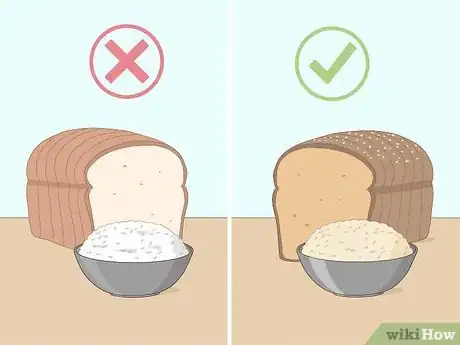
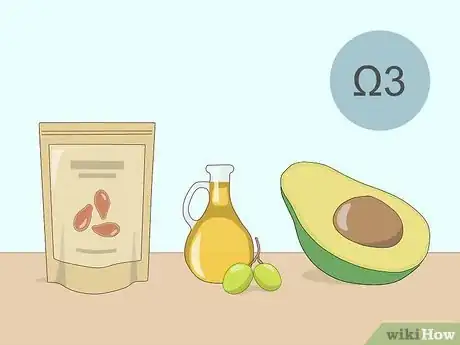



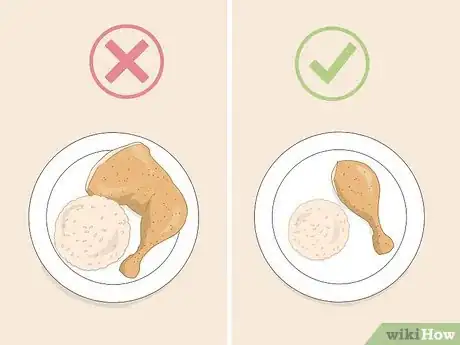

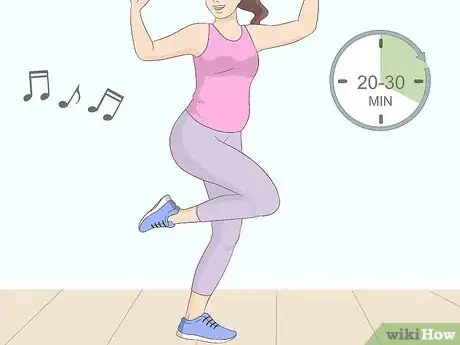
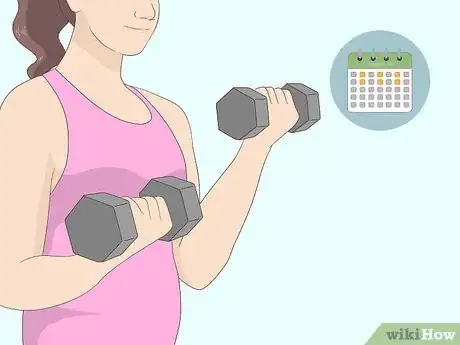

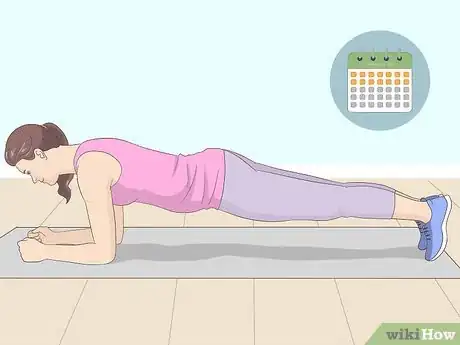

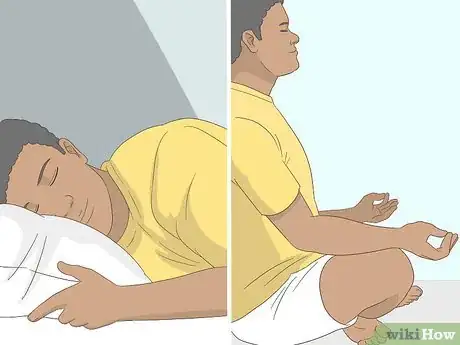

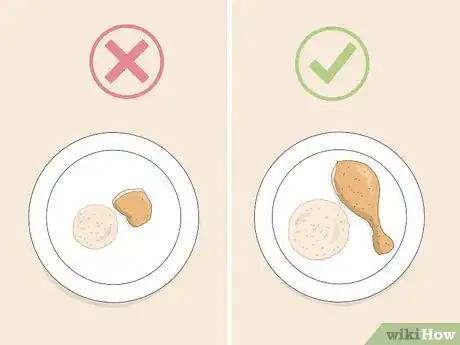



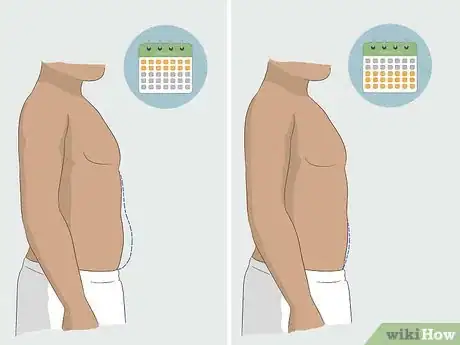


-Step-14.webp)
-Step-14.webp)
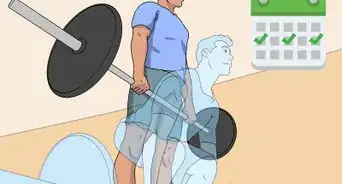


-Step-14-Version-3.webp)


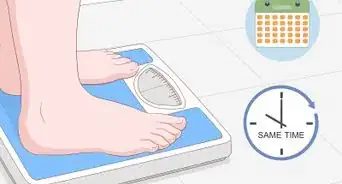



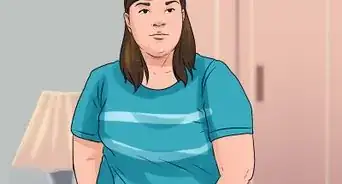











-Step-14.webp)
-Step-14.webp)
